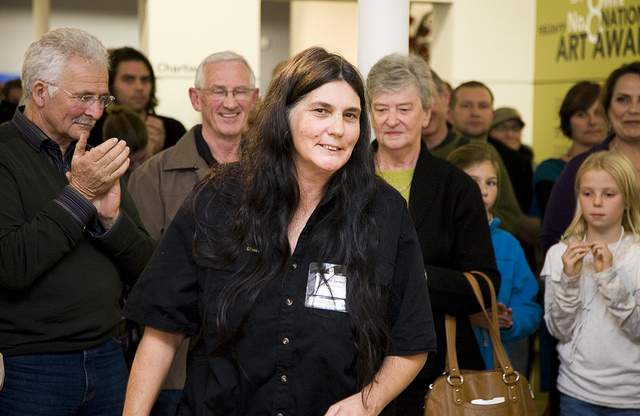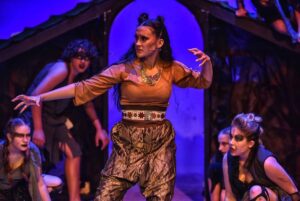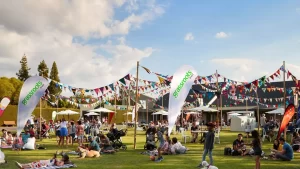Unsolved wire sculpture gets judge’s vote
Auckland artist wins the No. 8 Wire National Art competition
High art and agricultural products are not things which are normally associated with one another but that is the beauty of the Fieldays No 8. Wire National Art competition.
It takes the humble kiwi invention and asks artists to put an innovative spin on it.

The wire is not easily malleable, it’s a difficult material to work with and it takes months to create a sculpture but when an artist can create something faced with such complications, you can be sure it’s something spectacular.
This year’s winner, Donna Sarten, gave everything she had to her work that took her four months and a mammoth effort to complete.
“I’m not one to give up on anything,†she says.
She hand cut 1500 pieces of No. 8 wire using a hacksaw and a vice. She also had the added complication of dyslexia, which meant she would sometimes have to cut the wire a few times before she got it to the right length.
Her work, entitled “Unsolved,†is based on the true story of the killings of Jeanette and Harvey Crewe 41 years ago.
The Crewes, a farming couple who live in Pukekawa, were killed in the family farmhouse and dumped in the Waikato River.
It’s a story that has lived in New Zealand’s dark history, casting a shadow over rural life in a country proud of its farming heritage.
The couple’s daughter, Rochelle, was found, still in her cot, five days after the murders had taken place. A local farmer, Arthur Allen Thomas was jailed for the crime for nine years and then royally pardoned.
As the work alludes to, the case remains unsolved.
Sarten has been working on the concept for the last three years, refining her ideas and researching until she finally started the winning sculpture in February.
She created the full sized cot, with a No. 8 Wire skeleton, to represent the cot Rochelle Crewe was found in and the child abuse surrounding the story of the Crewe family.
“I think I’d always wanted to make something about it,†she says.

All of Sarten’s work is about injustice, abuse and war and in this sculpture she deals with two of the three; the abuse of Rochelle with her parents being taken from her and the injustice the imprisonment of an innocent man.
“I just remember when I was a kid, seeing it on TV. I was big news back then. I think we even had a black and white TV. All the neighbours had been talking about who had done it.â€
“The competition is in Hamilton and this is a Waikato story. I think, for me, Arthur Allen Thomas being put in prison for something he didn’t do is an injustice really. It changed his life, his wife’s life, his whole families life.â€
This is the second time Sarten has done work for the No. 8 wire competition. She entered the competition in 2009, with an entry called Field Punishment No. 1. She didn’t place but she felt that she would want to do the competition again.
This time round, she went up against 14 other finalists before Judge Carole Shepherd chose her work as the winner of the group.
An accomplished artist and teacher, Dr. Carole Shepheard said she found ‘Unsolved’ to be beautiful and mesmerizing.
“It is a work that that genuinely stirs the imagination and challenges ones understanding of both art and the law. It is successful in a way that most influential political work is. It raises the issue, creates the structure to best explore the idea and leaves some question for the viewer to resolve.â€
Shepheard commented on the obvious attention to detail that Sarten had given and labour intensity that the piece took in its construction
“It shows a real tenacity, doggedness ad commitment to the clear uncompromising concept. This work speaks of justice and conscience as much as it does contemporary art. It also goes beyond speaking of a specific event in New Zealand’s criminal history to the more pressing concern of child abuse and neglect.“
She makes all of her art in the Henderson studio at the Corban Estate Arts Centre that she shares with her partner Bernie Harfleet who is also an artist.
The space has a good energy; there’s an exhibition currently running right outside their studio door, other artists, such as Peter Longe and Louise Purvis, are housed in studios in the same lot and there are art classes running in the same building. The artists bounce ideas off each other and give one another feedback. One student even comes in to get Sarten’s opinion on a painting.
Sarten is an Elam graduate; she received her Masters in Fine Art from the school where she focused on work that dealt with Post Traumatic Stress Syndrome.
She began studying later in life, starting with a foundation course and then deciding to do a bachelor’s degree and later moving on to do her Masters.
She didn’t discover she had dyslexia until she was studying for her Master’s degree. It slightly hindered her in the essay aspects of her degree, but she persevered and still uses her study skills to help her with her art.
“Every time we make something, we read first. Sometimes I read for up to three months before I make something especially with work on war, because people are very particular. You can only go by what you research.“
“It can be hard sometimes,†she says. “Especially when its about child abuse.â€
But she maintains that while it’s a hard topic to work with, it’s something that she is passionate about and will stick with because it’s worth talking about it to get her audience to talk about the issues.
“I always think, with all my work, people get from it what they want to and what they feel it’s about. I like that people bring different interpretations to it and they see different things. Other people see different things, and I think that’s good.
“That’s why I think that it’s good that the people that go to Fieldays will get a chance to see it.
“People who wouldn’t normally go might go to Fieldays and they’ll go ‘oh, well have you been to the gallery that’s included’ and that’s good because then you get an audience of people that go that wouldn’t normally go to the gallery.â€
Lloyd Downing, the president of the Fieldays society, at the awards ceremony applauded the caliber of work that this year’s contestants had delivered.
“The artists’ skill and creativity astounds year after year with fresh and innovative sculptures created from the iconic farming material.â€
“Innovation is imperative to Fieldays and we are extremely proud to sponsor the ingenious No.8 Wire Art Awards.â€
“Unsolved†will be exhibited in Artspost Art Gallery and Shop with the other finalist’s work until July 18.
The prize earnings for first place is $4000, which Sarten plans to use to fund projects she has coming up. She still has some No. 8 left over.
“I’ve got a couple of rolls left, I’ve got a few ideas.â€




